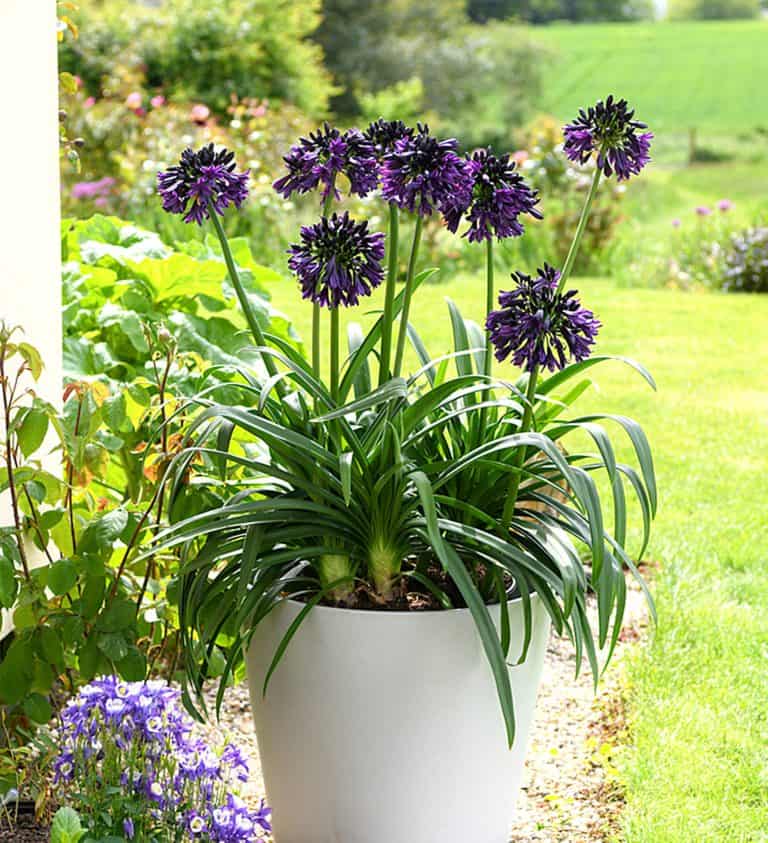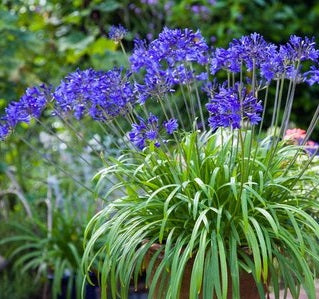Agapanthus Growing Conditions: Dirt, Sunshine, and Watering
Agapanthus Growing Conditions: Dirt, Sunshine, and Watering
Blog Article
Mastering the Art of Agapanthus Treatment: Necessary Steps for Healthy Development and Dynamic Blossoms
In the world of cultivation, the cultivation of agapanthus stands as a fulfilling undertaking for those who seek to nurture these stylish blooming plants. From picking the appropriate variety to grasping pruning methods, the journey towards growing prospering agapanthus plants is multifaceted and holds the essential to unlocking the complete capacity of these agricultural treasures.

Picking the Right Agapanthus Range

When choosing the right Agapanthus variety for your yard, think about aspects such as environment suitability, blossom shade, and development behavior. Agapanthus, frequently recognized as Lily of the Nile or African lily, can be found in a range of colors ranging from shades of purple and blue to white. Select a blossom color that complements your existing garden scheme to develop an unified landscape. Furthermore, think about the environment in your region to guarantee the Agapanthus selection you choose can flourish in your particular problems. Some selections are a lot more tolerant of chilly temperature levels, while others favor warmer climates. Comprehending the growth practice of various Agapanthus varieties is vital for appropriate placement within your garden. Some ranges have a clumping growth practice, perfect for boundaries or containers, while others have a more dispersing nature, ideal for ground cover or mass plantings. By very carefully assessing these aspects, you can select the best Agapanthus variety to improve the charm of your yard.
Suitable Planting Conditions
Considering the ideal ecological demands is crucial for effective Agapanthus cultivation. Agapanthus plants are delicate to chilly temperatures and ought to be safeguarded from frost during winter season months.
To make sure healthy growth and vivid blooms, plant Agapanthus light bulbs at a deepness of regarding 2-4 inches and room them 8-12 inches apart. Mulching around the base of the plants aids retain wetness and subdues weed development.
Watering and Fertilizing Tips
Maintaining correct moisture levels and giving essential nutrients are vital aspects in the treatment regimen for Agapanthus plants. When it comes to watering Agapanthus, it is vital to strike a balance. These plants prefer constantly wet dirt however are at risk to root rot if overwatered.
Fertilizing Agapanthus is important for promoting healthy development and respected blooms. Apply a well balanced fertilizer, such as a 10-10-10 formula, in the early spring as new development emerges. Repeat this application every 6-8 weeks throughout the expanding period. Avoid excessive fertilizing, as it can cause rich vegetation at the cost of blooms. Constantly comply with the supplier's instructions for appropriate dilution and application approaches. By following these watering and fertilizing tips, you can guarantee your Agapanthus plants thrive and produce vivid, resilient flowers.
Pruning Techniques for Agapanthus
Pruning Agapanthus plants at the appropriate times and with correct methods is essential for preserving their wellness and advertising optimal development and flowering. The optimal time to prune Agapanthus is in late winter or early spring prior to brand-new development arises. Begin by eliminating any type of dead or yellowing leaves near the base of the plant. Cut them as close to the ground as possible without harming the emerging shoots.
Deadheading spent blossoms can additionally redirect the plant's power right into generating even more blossoms rather than establishing seeds. If you want to accumulate seeds for propagation, leave some flowers to fully grown and completely dry on the plant.
Remember to utilize tidy, useful link sharp devices to make specific cuts and minimize the danger of introducing illness. Agapanthus. Regular trimming will certainly assist keep your Agapanthus looking healthy and cool while making sure a plentiful screen of beautiful blossoms
Managing Typical Pests and Illness
After ensuring proper pruning techniques for Agapanthus, it is vital to resolve common bugs and illness that can affect the health and wellness and vigor of these plants. One usual parasite that influences Agapanthus is the Agapanthus gall midget.
An additional typical concern is fungal leaf place, check here which offers as dark sores on the leaves. To stop fungal diseases, ensure good air blood circulation around the plants, stay clear of overhanging watering, and remove any kind of contaminated fallen leaves promptly. Additionally, Agapanthus plants can endure from origin rot if they are planted in poorly draining pipes soil. To stop this, plant Agapanthus in well-draining dirt and prevent overwatering. By being cautious and taking punctual action versus bugs and diseases, you can aid your Agapanthus plants flourish and create dynamic blossoms.

Final Thought
Finally, understanding the art of agapanthus treatment involves selecting the appropriate range, offering optimal growing conditions, proper watering and fertilizing, suitable pruning techniques, and dealing with common insects and diseases. By following these vital steps, you can guarantee healthy growth and vibrant flowers for your agapanthus plants. Bear in mind to on a regular basis keep track of and maintain your plants to advertise their total well-being and long life.
To guarantee healthy and balanced development and vibrant blooms, plant Agapanthus light bulbs at a depth of about 2-4 inches and area them 8-12 inches apart. By complying with these watering and fertilizing tips, you can guarantee your Agapanthus plants grow and generate lively, lasting blooms.
One usual parasite that impacts Agapanthus is the Agapanthus pop over to these guys gall midge. In addition, Agapanthus plants can experience from root rot if they are planted in inadequately draining pipes soil. By adhering to these essential steps, you can make certain healthy development and lively blooms for your agapanthus plants.
Report this page